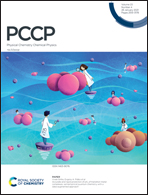Stability and superconductivity of Ca-intercalated bilayer blue phosphorene
Abstract
Superconductivity attracts much attention in two-dimensional (2D) compounds due to their potential application in nano-superconducting devices. Inspired by a recent experiment reporting the superconducting state in twisted bilayer graphene, here, based on the first-principles density-functional theory complemented by the Eliashberg formalism, we have verified the stability and predicted superconductivity in Ca-intercalated bilayer blue phosphorene. The electron and phonon properties and electron–phonon coupling show that AA- and AA′-stacking orders of the phosphorene bilayer are dynamically stable and exhibit conventional phonon-mediated superconductivity with superconducting transition temperatures (Tc) of 11.63 K and 11.74 K, respectively. Furthermore, we study the temperature-dependence of the superconducting energy gap (Δ(T)) and specific heat difference (ΔC(T)). According to our calculations, we found that the dimensionless parameters relative to the Δ(0) and the ΔC(Tc) differ slightly from the values predicted by the Bardeen–Cooper–Schrieffer (BCS) theory. We expect that our findings will broaden the knowledge of 2D superconducting materials and may stimulate more efforts in this field.



 Please wait while we load your content...
Please wait while we load your content...